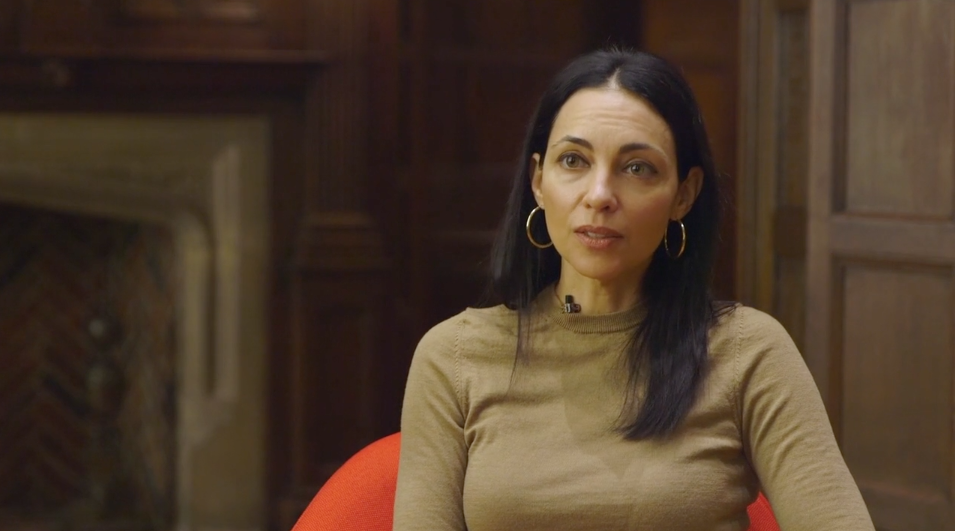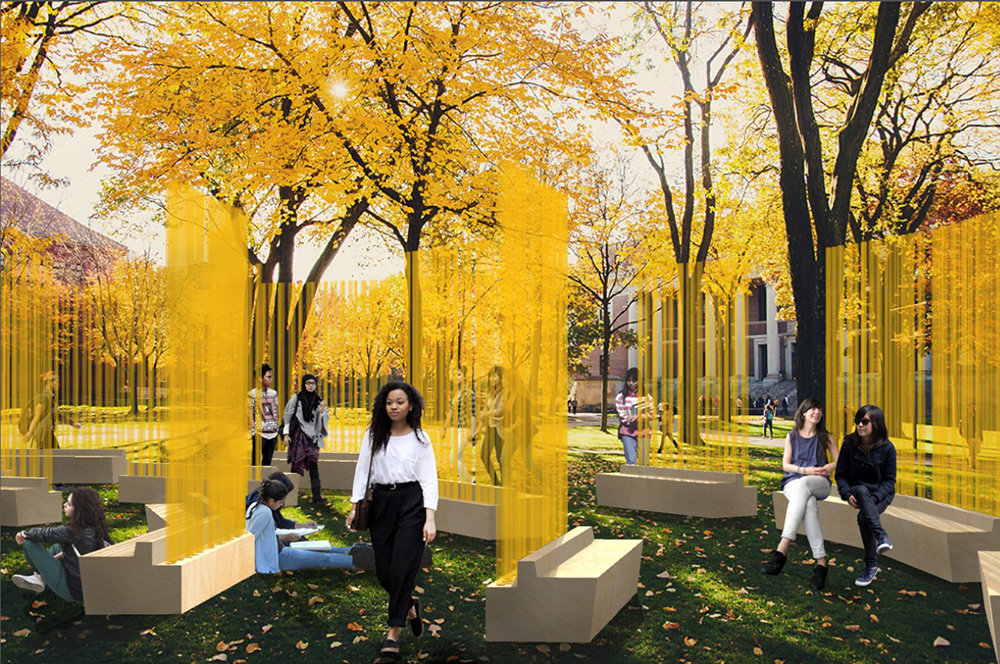Teresita Fernández is an internationally renowned American artist best known for prominent public installations and experiential large-scale sculptures that evoke striking landscapes. This fall, she’ll bring her artistry to the Harvard campus.
Fernández will installAutumn (. . . Nothing Personal), a site-specific work for Harvard Yard commissioned by the Harvard University Committee on the Arts (HUCA). HUCA and the artist worked closely with the Harvard Art Museums, the Office of the Provost, and many partners across the university to realize the installation and its extensive programming.
Taking inspiration from natural wonders, Fernández frequently chooses mediums—gold, graphite, and other minerals—that have complicated histories, often tied to colonialism. One example, currently on view in the Harvard Art Museums’ modern and contemporary galleries, is Small American Fires (2016), which references a landscape in crisis. The fire spreading across these small panels is meant to evoke the landscape of a natural wildfire (such as those frequently seen across the American continent) while alluding to ideas of indigeneity, protest, politics, and change.
Autumn (. . . Nothing Personal) is on view through October 1, 2018, in Harvard’s historic Tercentenary Theatre, which is between Memorial Church and Widener Library in Harvard Yard. Throughout that time, the installation will play host to dozens of events, readings, performances, and creative interventions. The programming aims to foster engagement with students, faculty, staff, and the broader Cambridge community.
“Fernández is bringing to campus her rare capacity to reshape social space through sculpture,” said Robin Kelsey, co-chair of HUCA, the Shirley Carter Burden Professor of Photography, and the dean of arts and humanities. “Her work will temporarily transform the Tercentenary Theater into a space of inclusion, reckoning, improvisation, and encounter. Like many at Harvard, I am eager to be a part of this experience.”
Fernández’s sculpture is in part inspired by American novelist and social critic James Baldwin’s text Nothing Personal, published in 1964 at the height of the civil rights movement. Baldwin’s essay, originally produced alongside images by photographer Richard Avedon, explores the complexities and contradictions at the center of the American experience. It offers a critique of a society that is disconnected, unjust, divisive, and violent, as seen through Baldwin’s personal reflections and perspectives.




